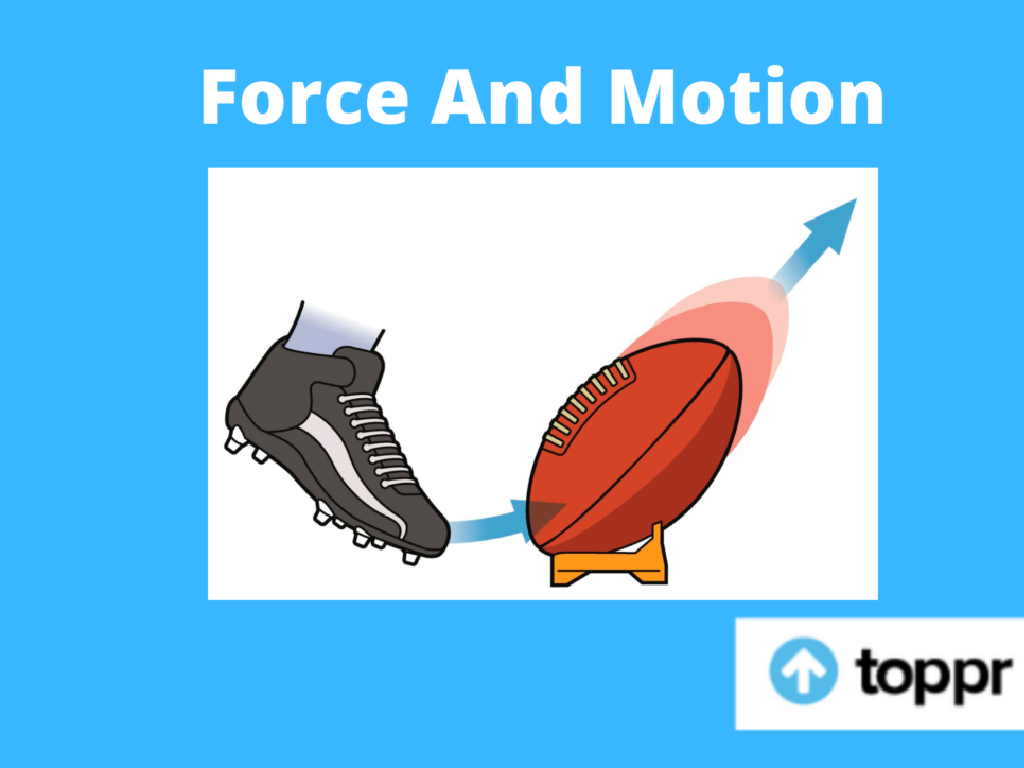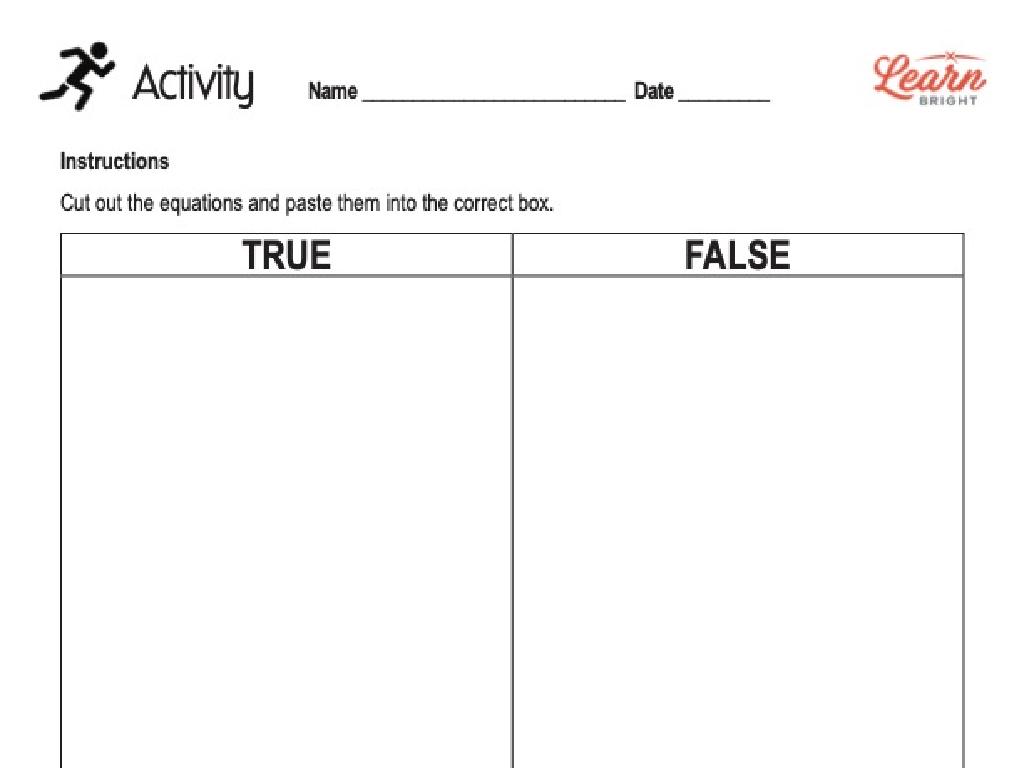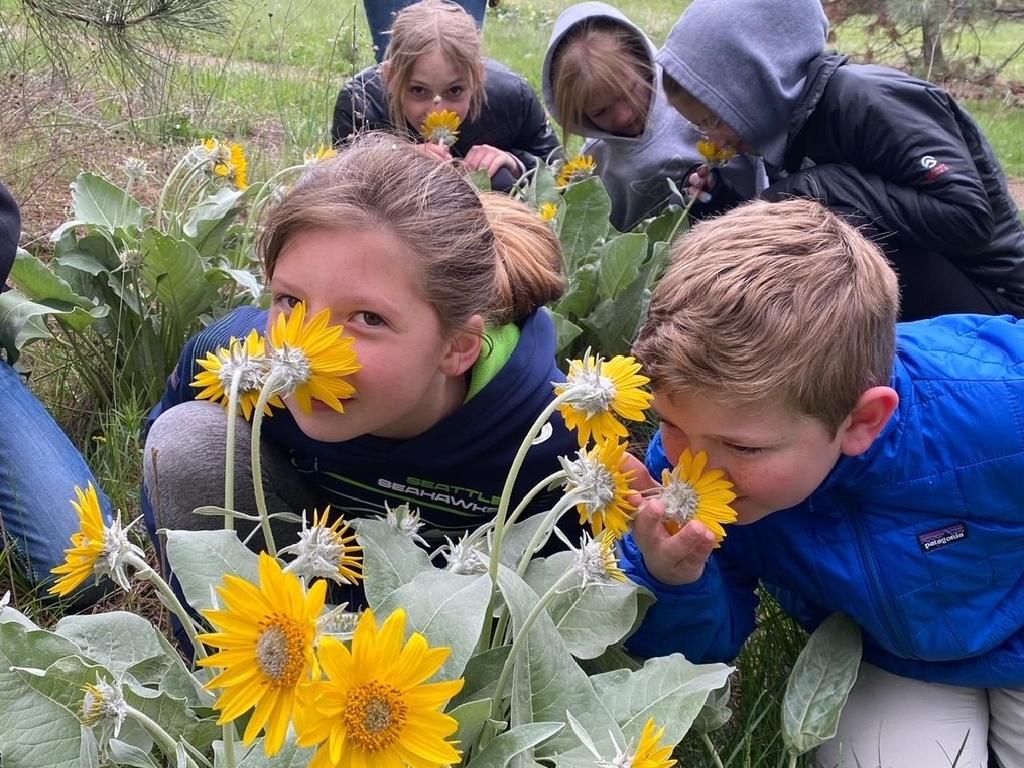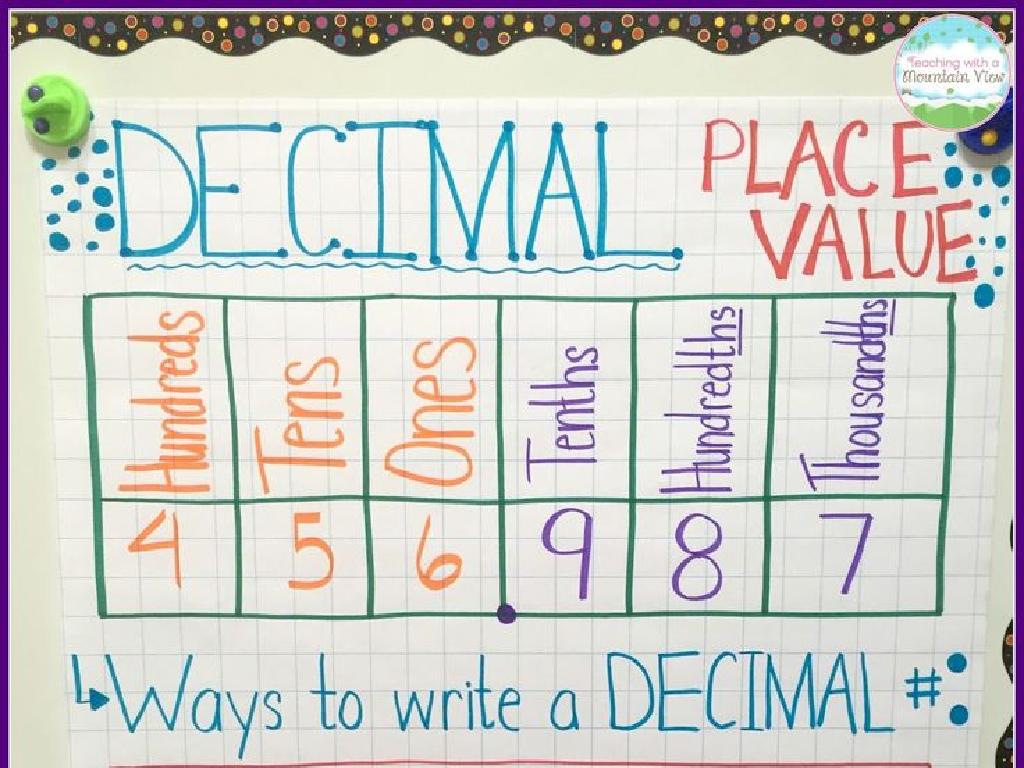Which Sentence Is In The Regular Past Tense?
Subject: Language arts
Grade: Fourth grade
Topic: Verb Tense
Please LOG IN to download the presentation. Access is available to registered users only.
View More Content
Exploring Verb Tenses: Regular Past Tense
– Understanding different verb tenses
– Defining what a verb is
– Action words in sentences, like ‘run’, ‘jump’, ‘think’
– Today’s focus: Regular Past Tense
– Verbs ending with ‘ed’, like ‘walked’, ‘laughed’, ‘cooked’
– Examples of regular past tense verbs
– ‘I walked to the park’, ‘She laughed at the joke’, ‘We cooked dinner’
|
Begin the lesson by discussing the concept of verb tenses and their role in indicating the time of action. Explain that a verb is a word that describes an action or a state of being. Today’s lesson will focus on the regular past tense, which is used to describe actions that have already happened. Regular past tense verbs typically end in ‘ed’. Provide examples and encourage students to think of actions they did yesterday as a way to relate to the concept. Have them practice converting present tense verbs to regular past tense.
Exploring the Past Tense
– Understanding past tense
– Past tense describes actions completed in the past
– When do we use past tense?
– Used for actions that happened before now
– Examples of past tense verbs
– Walked, jumped, and laughed are past tense verbs
– Regular vs. irregular verbs
– Regular verbs end in -ed, like ‘walked’
|
This slide introduces the concept of the past tense, which is fundamental in English grammar for describing actions that have already occurred. Start by explaining that past tense verbs are used to talk about things that happened in the past. Provide clear examples of past tense verbs, and ensure to highlight the difference between regular and irregular verbs. Regular verbs typically end in -ed, such as ‘walked’, while irregular verbs do not follow this pattern, such as ‘sang’ or ‘went’. Encourage students to think of actions they did yesterday or last week and to describe those actions using past tense verbs. This will help them understand and apply the concept of regular past tense in their daily language use.
Regular vs. Irregular Verbs
– Understanding Regular Verbs
– Regular verbs end with ‘-ed’ in past tense
– Forming Past Tense with ‘-ed’
– For example: ‘walk’ becomes ‘walked’
– Irregular Verbs Patterns
– Irregular verbs change in different ways
– Examples of Both Verb Types
– ‘Go’ becomes ‘went’ and ‘have’ becomes ‘had’
|
This slide introduces the concept of regular and irregular verbs to the students. Regular verbs are transformed into the past tense by simply adding ‘-ed’ to the base form, such as ‘talk’ to ‘talked’. Irregular verbs, on the other hand, do not follow a set pattern and change form completely, such as ‘run’ to ‘ran’. It’s important to provide students with a clear understanding of the difference between the two and offer plenty of examples. Encourage students to think of verbs from their daily life and decide if they are regular or irregular. This will help them grasp the concept and apply it to their writing and speaking.
Forming the Regular Past Tense
– Forming regular past tense verbs
– Add ‘-ed’ to base verbs
– Turn ‘walk’ into ‘walked’
– Pronounce ‘-ed’ endings
– ‘Hugged’ sounds like ‘d’, ‘laughed’ sounds like ‘t’
– Practice with examples
– ‘I walk’ becomes ‘I walked’ yesterday
|
This slide introduces students to the concept of regular past tense in verbs, which is a key component of proper grammar in writing and speaking. Start by explaining that to form the past tense of a regular verb, you usually add ‘-ed’ to the end of the base form. Emphasize the pronunciation of the ‘-ed’ ending, which can vary depending on the last sound of the verb. It can sound like ‘d’ (as in ‘hugged’), ‘t’ (as in ‘laughed’), or ‘id’ (as in ‘decided’). Provide students with a list of regular verbs and have them practice converting these to their past tense forms. Encourage them to say the words out loud to get used to the pronunciation. This practice will help them recognize and use the regular past tense correctly in their writing and conversations.
Regular Past Tense Verbs
– What is regular past tense?
– It’s when we add -ed to a verb to show it happened in the past.
– ‘I walked’ vs. ‘I walk’
– ‘I walked to school’ is past tense; ‘I walk to school’ is present tense.
– Practice changing tenses
– Let’s turn ‘I play outside’ into past tense.
– Regular past tense clues
– Words ending in -ed often signal regular past tense.
|
This slide introduces students to the concept of regular past tense verbs, which are verbs that end in -ed to indicate an action that has already happened. Start by explaining the basic rule of adding -ed to the base form of the verb. Use clear examples to show the difference between present and past tense. Engage the class with an activity where they convert present tense verbs to past tense, reinforcing the lesson. Highlight clues that can help identify regular past tense verbs in reading. Encourage students to think of verbs they use daily and practice changing them to past tense.
Past Tense Spelling Rules
– Regular past tense formation
– Double final consonants: ‘stop’ to ‘stopped’
– When a verb ends in a single vowel + consonant, double the consonant.
– Drop silent ‘e’: ‘hope’ to ‘hoped’
– If the verb ends in ‘e’, just add ‘d’.
– Practice with more examples
– ‘plan’ becomes ‘planned’, ‘bake’ becomes ‘baked’
|
This slide focuses on the spelling changes that occur when forming the regular past tense of verbs. Emphasize the rules for doubling the final consonant and dropping the silent ‘e’. Provide students with a clear explanation of when to apply these rules: double the consonant when the verb ends in a single vowel followed by a consonant, and remove the ‘e’ before adding ‘d’ if the verb ends in a silent ‘e’. Encourage students to come up with additional examples and write sentences using the past tense forms of the verbs. This practice will help solidify their understanding of regular past tense formation and prepare them for identifying these verbs in different texts.
Class Activity: Past Tense Hunt
– Search for past tense verbs in a book
– List ten regular past tense verbs
– Verbs that ended with ‘ed’ like ‘walked’, ‘jumped’
– Share your verbs with the class
– Understand regular past tense usage
– Helps recognize the pattern of regular verbs in past tense
|
This activity is designed to help students identify and understand the use of regular past tense verbs in literature. By searching for verbs that end in ‘ed’ in their favorite books, students will learn to recognize the pattern that regular verbs follow when they are in the past tense. Encourage students to look for verbs that describe actions that have already happened. After listing ten verbs, students will share their findings with the class, which will reinforce their learning and provide an opportunity for peer learning. As a teacher, be prepared to discuss the verbs found and correct any misconceptions about past tense usage. Offer examples and guidance as needed.
Conclusion: Mastering Regular Past Tense
– Recap: Regular Past Tense Verbs
– Regular past tense verbs often end in ‘ed’, like ‘walked’ or ‘jumped’.
– Importance of Correct Verb Tense
– Using the right tense helps readers understand when actions happen.
– Homework: A Past Tense Story
– Write a story with ten verbs in the past tense, like ‘played’ or ‘laughed’.
– Practice Makes Perfect
|
As we wrap up, let’s remember that regular past tense verbs typically end with ‘ed’ and are used to describe actions that have already happened. Understanding and using the correct verb tense is crucial for clear communication, especially in writing. For homework, students will craft a short story incorporating ten regular past tense verbs, which will help reinforce their understanding of verb conjugation and tense usage. Encourage creativity and remind them that practice is key to mastering verb tenses. During the next class, we can review some of the stories to celebrate their efforts and provide constructive feedback.





